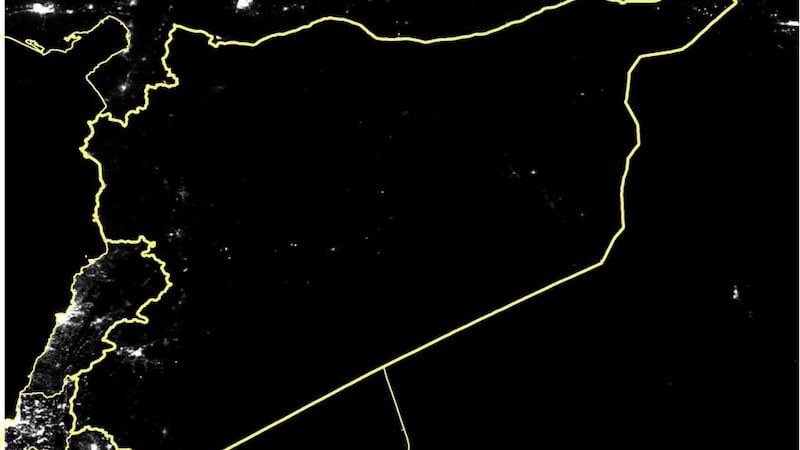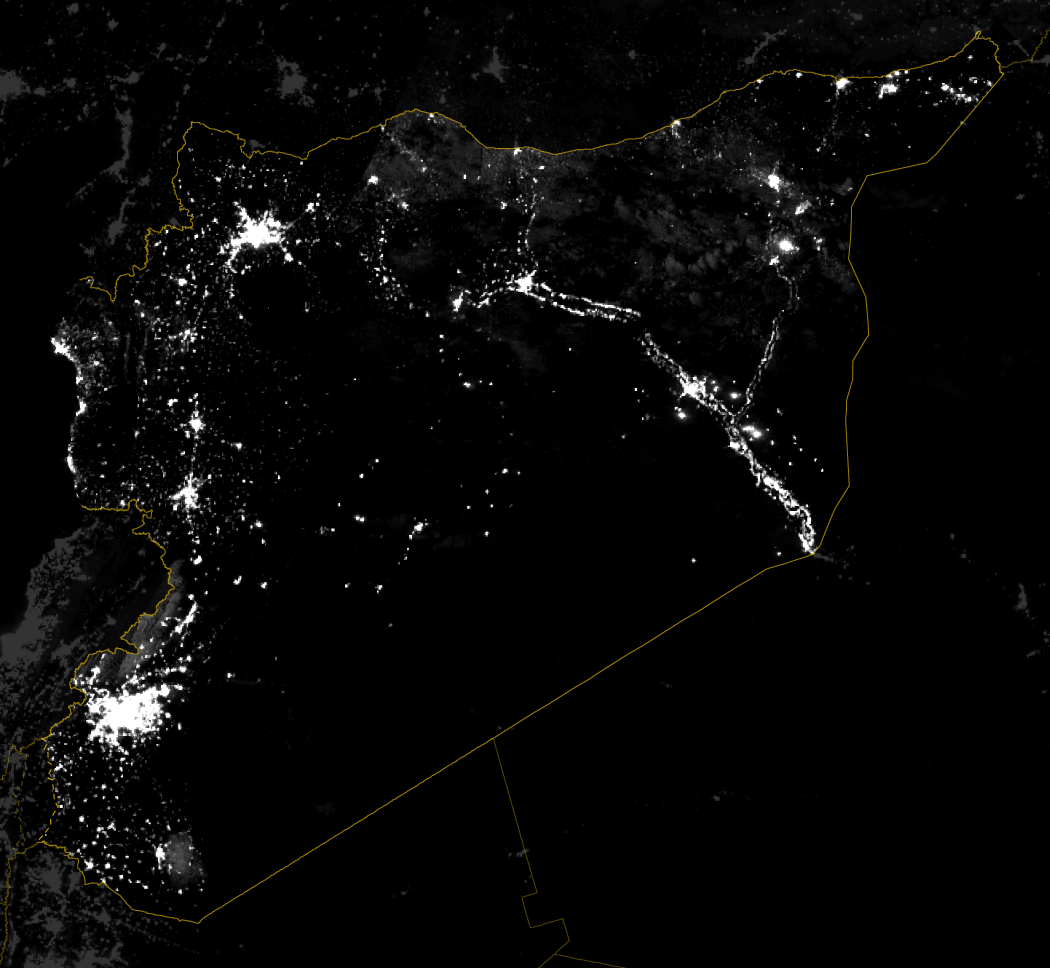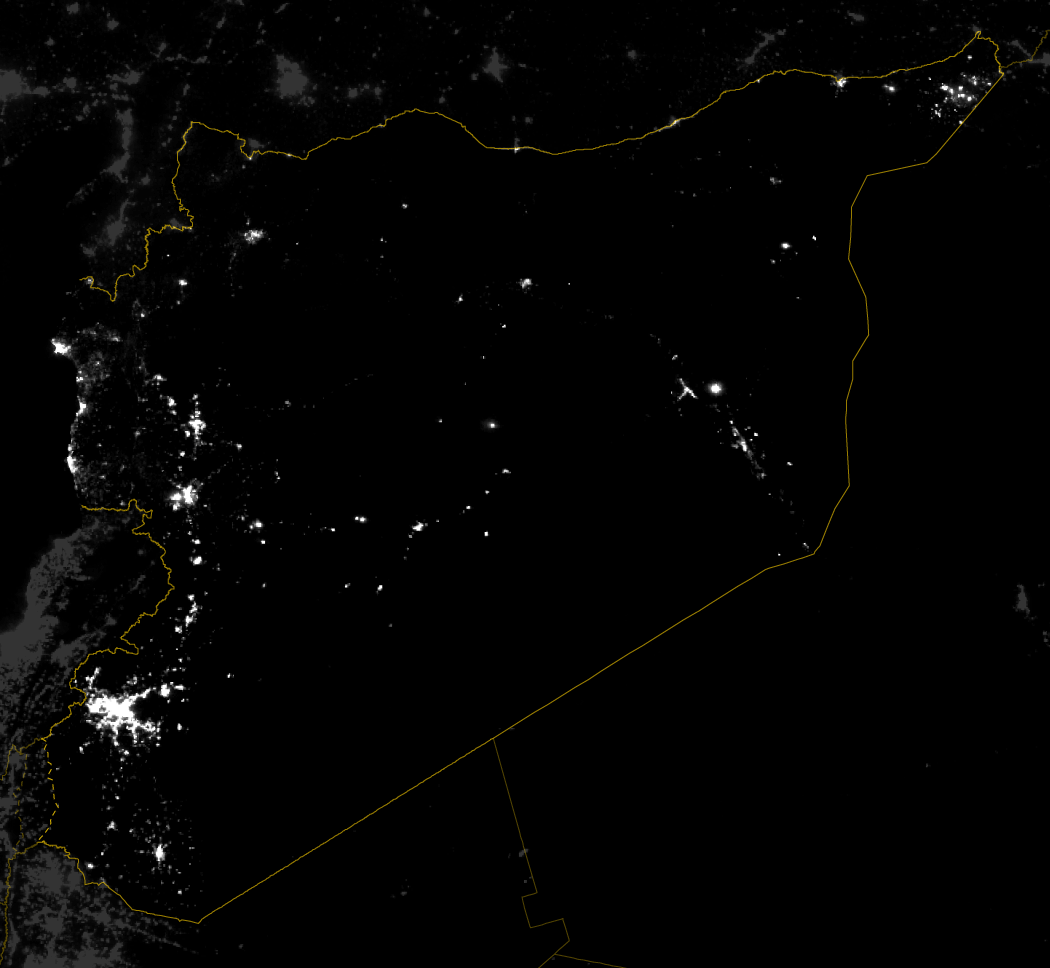As the Syrian conflict enters its fifth year, satellite images have been released which show that 83 per cent of all lights in Syria have gone out since the war began.
The Syrian conflict has claimed the lives of more than 200,000 people since 2011 and is now recognised as the biggest humanitarian crisis the world has seen since the second World War. Close to four million people have fled to neighbouring countries, while 7.6 million people have been internally displaced.
The satellite images, which were analysed by scientists based at Wuhan University in China in cooperation with the #withSyria coalition of 130 non-government organisations, show the number of lights visible from space over Syria has fallen by 83 per cent since March 2011.



Taken from more than 800km above the earth, the images show that in some of the worst-affected parts of the country, like the city of Aleppo, 97 per cent of lights have gone out.
"These images help us understand the suffering and fear experienced by ordinary Syrians every day, as their country is destroyed around them," said lead researcher on the project, Dr Xi Li. He added that provinces near the Israeli border, such as Damascus and Quneitra, had not been as badly affected, with electrical light declining by 35 per cent and 47 per cent respectively.
Syrian poverty
A United Nations-backed report, released on Tuesday to mark the four year anniversary of the conflict, reveals that 80 per cent of the Syrian population has fallen into poverty since the outbreak of war, while life-expectancy has reduced by 20-years.
The Syrian Centre for Policy Research report shows how Syria has become an impoverished country, with an estimated 4 in every 5 Syrians living in poverty and 30 per cent of the population in abject poverty.
The report also found fatalities from the conflict almost doubled in 2014 to 210,000 deaths, with 6 per cent of the population having been killed, maimed or injured.
As the death toll continues to rise and millions of refugees leave their homes in search of asylum abroad, the country’s population has dropped from 20.87 million in 2010 to 17.65 million at the end of 2014.
The research warns the future growth of the Syrian economy has been “compromised by the systematic collapse and destruction of its economic foundations”, with the total GDP loss estimated at $119.7 billion (about €112.7 billion).
‘Darkest year yet’
Jan Egeland, secretary general of the Norwegian Refugee Council, described 2014 as "the darkest year yet in this horrific war".
“Civilians are not protected as the [UN] Security Council promised they would be, their access to relief has not improved and humanitarian funding is declining compared to the needs,” he said. “It is an outrage how we are failing Syrians.”
Éamonn Meehan, executive director of Trócaire, highlighted the importance of the upcoming donor conference in Kuwait to raise funds for humanitarian operations in Syria, adding that the UN assistance plan for Syria in 2014 was only 48 per cent funded.
"A lack of funding has forced the World Food Programme to reduce food rations by 30 per cent," Mr Meehan said. "This simply is not good enough.
“At the upcoming donor conference in Kuwait later this month, the EU in particular needs to step up and commit itself to adequately funding the humanitarian response.”










